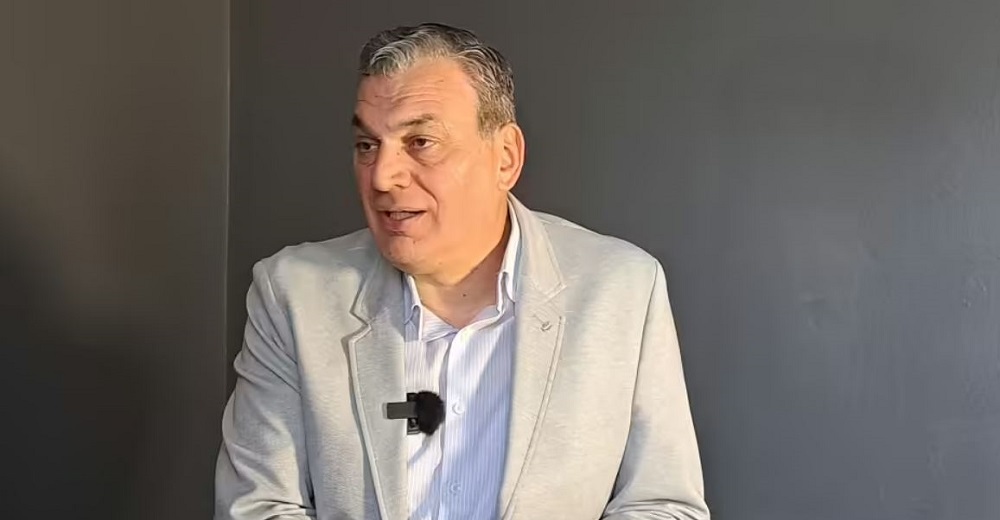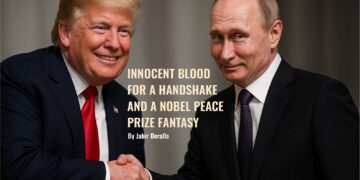
Introduction and theoretical determination
The essay before you aims to make a brief scientific review of the hybrid threats that Russia applies to Macedonia, and, in principle, to briefly present the approaches and their modeling in implementing them. In fact, to try through a scientific approach to present Russia’s real modeling and approaches within the framework of the hybrid threats against Macedonia.
The term “hybrid threats” implies a broad definition of a set of activities that can be reduced to a concept. It is a concept because it does not concentrate exclusively on one activity, but can constantly expand its scope depending on the needs of warfare in modern conditions. Hence, we can transfer hybrid threats to the sphere of warfare, which is not the same as waging armed war. This, in turn, directs us toward creating a scientific, intellectual, and, above all, practical distinction between armed war as a specific form of war and hybrid threats, or hybrid warfare, as a set of different doctrines of specific forms of war. Simply put, we can conclude that hybrid threats or hybrid warfare represent a special approach to waging war that does not have to be armed—that is, a “bloodless war.” That is precisely why, by linking hybrid threats, or hybrid warfare, to the understanding of war as a social phenomenon and comparing it to armed struggle as a specific form of war, we can freely say that hybrid threats are the result of the understanding of modern warfare, and its defining, and determining.
It is precisely this approach to understanding war and modern warfare that provides a theoretical and practical introduction to the use of hybrid threats and their transfer to the level of hybrid warfare.
The definition of hybrid attacks includes various approaches, depending on what they are used for and with what goal. Generally: “Hybrid threats are harmful activities that are planned and carried out with malign intent. They aim to undermine a specific target, such as a state or an institution, through a variety of means, often combined. These means may include information manipulation, cyberattacks, economic influence or coercion, influence over energy and resources, covert political maneuvering, coercive diplomacy, or threats of military force. Hybrid threats describe a wide range of harmful activities with various goals, ranging from influence and interference operations to hybrid warfare.”
This brings us to the ultimate goal of hybrid threats, that is, conducting hybrid warfare as an instrument for achieving victory in war. It is necessary that we have a clear idea that precisely the modern understanding of war within the theory of war, has long been no longer limited to war as the use of armed force. In this context, the modern understanding of war undoubtedly includes the use of various doctrines of warfare with the ultimate goal of victory in war, that is, “imposing our will upon the enemy.” That will does not at all have to be imposed with visible force or the use of hard power.
Hence, in the Chinese theoretical approach to war, you will find a completely clear acceptance of the term “Unrestricted Warfare”1 and the use of “Utilitarianism” as a means within that unrestricted warfare, and which refers to the changed human nature in the modern consumer society and the fast pace of life and easy accessibility to various resources, information, and needs based on the need for an easy and comfortable living.
Then, a drastic change can be noticed in the theoretical approach to war, from simply waging armed struggle to a “New approach to defining war” in the Russian theoretical approach, as visibly altered in regards to the Soviet one, but held to the intractability of the doctrinal issues of armed conflict2.
Unlike Gerasimov, who deals with the doctrinal use of armed forces and at the same time only touches on modern warfare and hybrid war for the needs of armed struggle, as Galeotti concludes regarding Gerasimov’s 3 exclusively doctrinal approach3, Gulin already offers an appropriate approach to the modern Russian theoretical model of understanding war and its conduct, i.e., warfare. It is precisely Gulin who speaks of “bloodless war” and “modern combat identity”4, explaining that we cannot list all the forms in which war can begin, and this is not an armed attack, that is, initiation of combat actions, but other forms of hostile activities aimed at weakening or disorienting the enemy. These forms are precisely hybrid threats, namely, hybrid warfare.
In practice, this presents a serious problem for the population of the attacked state, which raises one key question: “How do we know we are at war?” It is obvious that hybrid threats or hybrid warfare do not mark the enemy’s combat identity, and we can hardly or not identify it at all. At the same time, we don’t know we are at war because we have no visible casualties, and that is precisely the goal of hybrid threats, to enable the conduct of a “bloodless war.”
Understanding the modern physiognomy of war, within which the combat identity is unknown, represents a new approach to modern warfare. That modern warfare basically has the hybrid threats or hybrid warfare5.
It is obvious that modern warfare has completely changed its physiognomy and basically in the second and third decade of the 21-st century, and probably in the future, is based on hybrid threats or hybrid warfare that conceals the combat identity from the public and even more so does not cause visible and disturbing bloodshed for the public.
The Russian model of hybrid threats against Macedonia
The Russian model of using hybrid threats against Macedonia is different from the established (visible) one used against countries of Western Europe.
Why is this model different, and therefore the approaches, that is, the instruments more numerous? Simply, because Macedonia displays systemic dysfunction of the institutions, a weak educational base among its population, pronounced religiosity and pro-Russian sentiment within the Orthodox faith, economic weakness of the state, poverty among the population, environment, mythology in life, and an inappropriate comparison or glorification of Russia’s role in the Balkans and especially in the history of Macedonia, the use of the old and new intelligence network from Russia, as well as the use of influence from Serbia and Hungary, particularly in economic and political decisions, which is especially prominent.
With such a vast range of instruments to use, it is not at all a problem for Russia to model its hybrid threats in various areas as a unique opportunity for combined actions in Macedonia. This allows Macedonia not only to be a target of hybrid threats, but it has been turned into a proxy state from whose space (territory, cyberspace, media space, educational, economic, and political space) a hybrid war is being waged against NATO’s southern flank, against the countries in the region. Thus, Macedonia is turning into a source of threat to regional security, that is, into a state that radiates regional insecurity. And precisely as a proxy state from whose space the hybrid war is being waged against itself and in the region, it helps Russia greatly—in its approach within the hybrid warfare to remain unnoticed—to keep its combat identity invisible.
Within Russia’s model of hybrid threats towards Macedonia, the approaches are very dynamic and diverse. First and foremost, Macedonia itself is no longer a target of hybrid threats, primarily, because in many aspects of action, Russian hybrid threats are successful in Macedonia and Russia’s current goal is to maintain the achieved state—successes and their exploitation in regards to realizing the next goals towards its neighbors, namely, towards NATO’s southern flank.
The result of such an approach towards Macedonia is the easy placement of disinformation and fake news in Macedonia’s media space, and especially on social networks. Literally flooding with anti-NATO and anti-EU posts on various fake and real profiles. Creating a distorted image of the true role and support of NATO, the USA, and the EU for Macedonia to the point of government accusations that the EU is destroying the Macedonian identity. Up to an open diplomatic conflict with Bulgaria based on deliberately created disinformation with the purpose to further weaken trust between allies in NATO’s southern flank. And it is precisely this position as a repeated story in mainstream media by the Prime Minister that is being placed in the context of the threat to Macedonia, especially the Macedonian identity, by the EU, and incited by Bulgaria. Even the tendentious opening of the closed so-called “Macedonian issue” by the Prime Minister of Macedonia as an alleged strategy to prove Bulgarian tendencies of not recognizing the Macedonian identity and language is a blatant example of the modeling and approach of hybrid threats by Russia.
At the same time, under the influence of Russian political tendencies to create conflict in NATO’s southern flank, certain political groups in Bulgaria also came out with anti-Macedonian views, which in the Macedonian public gave confirmation to Mickoski’s views, especially because those views were intensively used in the Macedonian media space.
In fact, this coordinated activity of pro-Russian groups in Bulgaria and pro-Russian groups in Macedonia, in the last year and as part of the government, is regularly present. Precisely this is a direct indicator of Russian hybrid threats against Macedonia and the hybrid war that Russia is waging against the EU and NATO in the region, using Macedonia as a proxy state at the highest government level, and within the covert political maneuvering with the goal of disrupting partnership relations in NATO’s southern flank.
As one extremely important aspect in which Russia is modeling hybrid threats in Macedonia is the continued political maneuvering through the promotion of uneducated party soldiers to be future political decision-makers in all key spheres of the state. In this way, a long-term subversive activity is being carried out against the foundations of the state, disabling it from performing a proper analysis in relation to the upcoming and active risks and threats to security.
It is through this prism of viewing the model through which Russia realizes its hybrid threats in Macedonia, that it not only completely conceals its combat identity within the hybrid warfare, but also exceptionally well and, we could say, successfully models its future approach to Macedonia. At the same time, and even more importantly, the use of Macedonia in the region as a proxy state that will carry out the tasks of Russia’s hybrid activities.
Therefore, our – Macedonian problem – is not a question of whether Russia will continue with hybrid threats against Macedonia. We can reduce the question to two levels:
- How can the country – with what strategy and with what activities –exit the situation of being a Russian proxy state?
- How and in what time frame and based on what activities can the modeling of Russian hybrid threats in our own society be prevented?
By answering these two crucial questions, Macedonian will be able to very easily predict and prevent Russia’s approach through the use of hybrid threats to endanger the security not only of Macedonia, but also of the region.
(continued)
Translated by N. Cvetkovska
[1] Qiao Liang and Wang Xiangsui, Unrestricted Warfare, Beijing: PLA Literature and Arts Publishing House, 1999
[2] Валерий Герасимов, „Основные тенденции развития форми способов применения ВС, актуальные задачи военной науки по их совершенствованию“, Вестник Академии военных наук 42(1), Москва, 2013
[3] Mark Galeotti, “I’m Sorry for Creating the „Gerasimov Doctrine‟”, Foreign Policy, March 5, 2018
[4] Василий Гулин, „О новой концепции войны“, Военная мысль 2, Москва, 1997
[5] Steven Metzand, Phillip R.Cuccia, „Defining War For The 21st Century“, Strategic Studies Institute Annual Strategy, Conference Report 2010, U.S. Army War College, Carlisle, 2011















